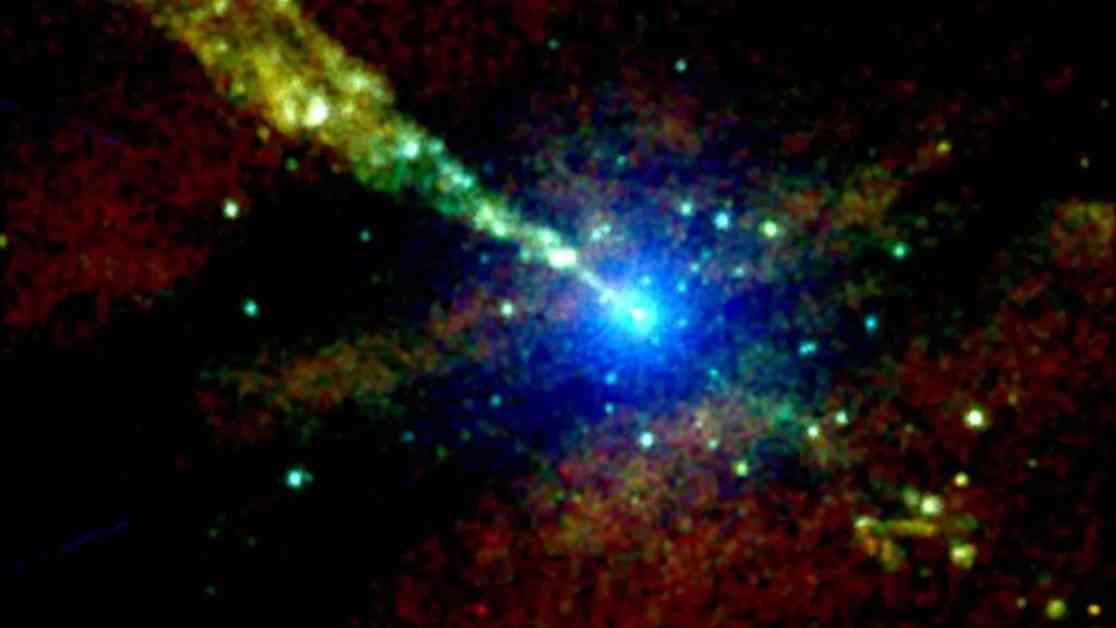A recent study led by astrophysicist David Bogensberger from the University of Michigan has revealed new insights into the jets emitted by black holes. Using data from NASA’s Chandra X-ray Observatory, researchers discovered bright “knots” within the jet of energy expelled by a black hole in the Centaurus A galaxy. These knots appear to move at different speeds when observed in X-rays compared to radio wavelengths, raising questions about the nature of these jets.
The study, published in The Astrophysical Journal, highlights the unique information provided by X-ray observations and the importance of continued funding for the Chandra Observatory. Despite facing potential budget cuts, NASA’s Chandra telescope remains a valuable tool for studying the universe.
By analyzing two decades of Chandra data, Bogensberger and his team found that some jet knots in Centaurus A were traveling at speeds close to the speed of light. This discrepancy in speed between X-ray and radio observations suggests that there is still much to learn about how these jets operate.
The formation and evolution of these knots, as well as their changing brightness over time, present further mysteries for astronomers to explore. Understanding the complex interactions between black holes and their surrounding environments is crucial for unraveling the mechanisms driving these energetic jets.
Future studies of black hole jets in Centaurus A and other galaxies may shed light on the underlying processes at play. By comparing observations across different wavelengths, researchers hope to gain a more comprehensive understanding of these powerful cosmic phenomena.
As the scientific community continues to uncover the secrets of black holes and their jets, the Chandra X-ray Observatory remains a vital tool for advancing our knowledge of the universe. Through ongoing research and exploration, astronomers aim to unlock the mysteries of these enigmatic celestial objects and deepen our understanding of the cosmos.










